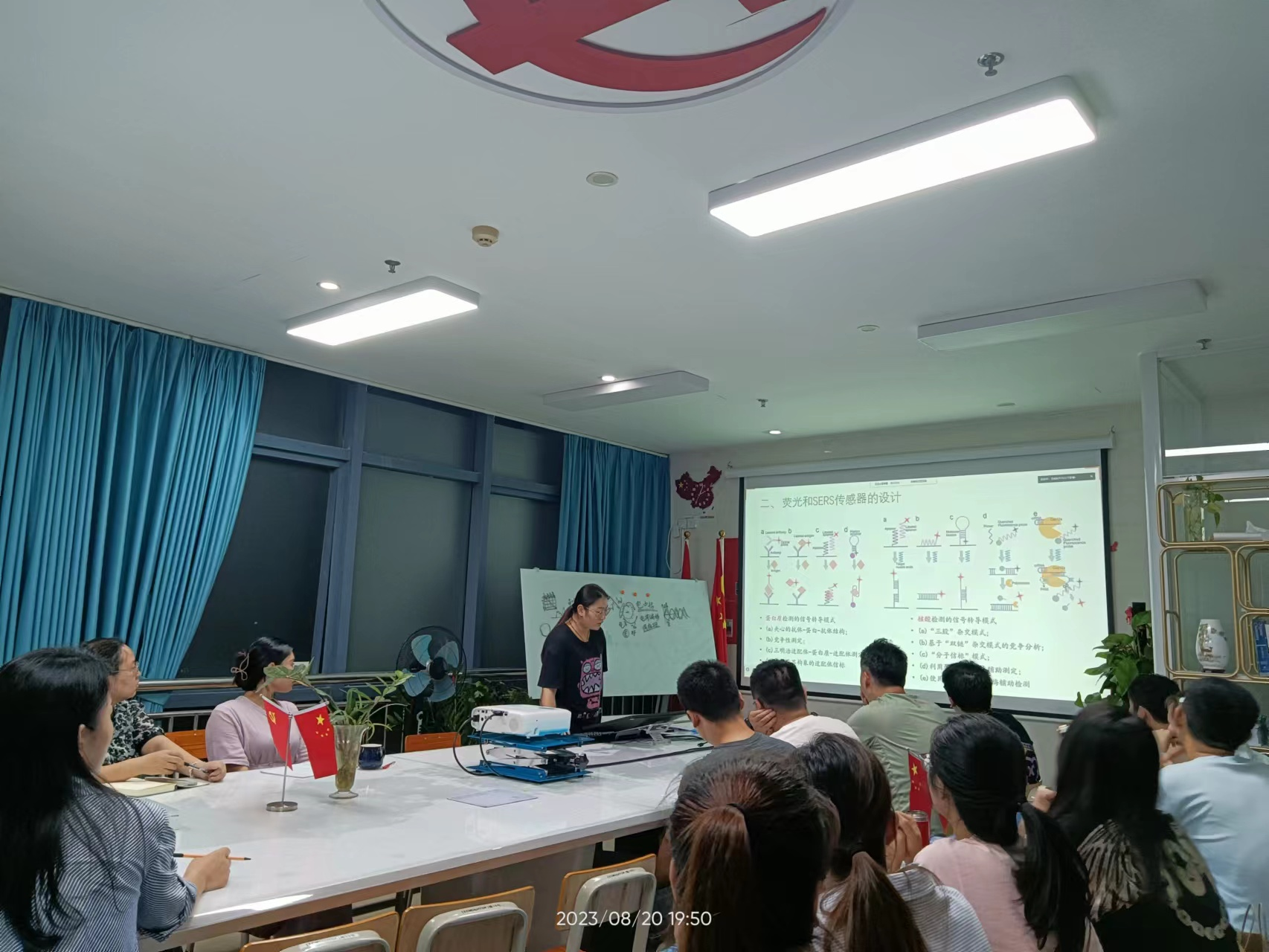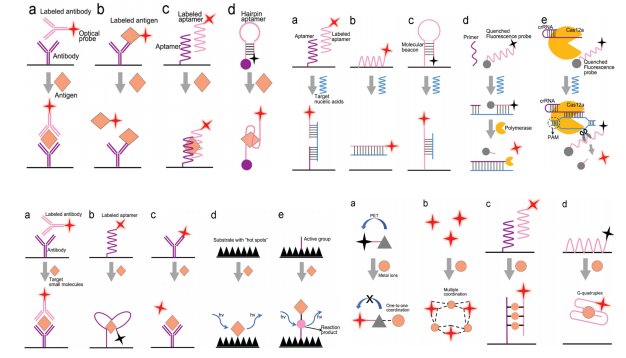
Visible-light and near-infrared fluorescence and surface-enhanced Raman scattering point-of-care sensing and bio-imaging: a review
可见光和近红外荧光和表面增强拉曼散射即时传感和生物成像

主讲人:赵晨霄
Chem. Soc. Rev, 2022, 51, 329-375.
Abstract:
This review article deals with the concepts, principles and applications of visible-light and near-infrared (NIR) fluorescence and surface-enhanced Raman scattering (SERS) in in vitro point-of-care testing (POCT) and in vivo bio-imaging. It has discussed how to utilize the biological transparency windows to improve the penetration depth and signal-to-noise ratio, and how to use surface plasmon resonance (SPR) to amplify fluorescence and SERS signals. This article has highlighted some plasmonic fluorescence and SERS probes. It has also reviewed the design strategies of fluorescent and SERS sensors in the detection of metal ions, small molecules, proteins and nucleic acids. Particularly, it has provided perspectives on the integration of fluorescent and SERS sensors into microfluidic chips as labon-chips to realize point-of-care testing. It has also discussed the design of active microfluidic devices and non-paper- or paper-based lateral flow assays for in vitro diagnostics. In addition, this article has discussed the strategies to design in vivo NIR fluorescence and SERS bio-imaging platforms for monitoring physiological processes and disease progression in live cells and tissues. Moreover, it has highlighted the applications of POCT and bio-imaging in testing toxins, heavy metals, illicit drugs, cancers, traumatic brain injuries, and infectious diseases such as COVID-19, influenza, HIV and sepsis.
摘要:
本文综述了可见光、近红外(NIR)荧光和表面增强拉曼散射(SERS)在体外即时检测(POCT)和体内生物成像中的概念、原理和应用。讨论了如何利用生物透明窗提高穿透深度和信噪比,以及如何利用表面等离子体共振(SPR)放大荧光和SERS信号。本文重点介绍了等离子体荧光和SERS探针。综述了荧光和SERS传感器在金属离子、小分子、蛋白质和核酸检测中的设计策略。特别是,它提供了将荧光和SERS传感器集成到微流控芯片中作为labon-chips以实现护理点测试的观点。它还讨论了主动微流体装置的设计和非纸或纸为基础的横向流动测定体外诊断。此外,本文还讨论了设计体内近红外荧光和SERS生物成像平台的策略,以监测活细胞和组织的生理过程和疾病进展。此外,它还重点介绍了POCT和生物成像在检测毒素、重金属、非法药物、癌症、创伤性脑损伤以及COVID-19、流感、艾滋病毒和败血症等传染病方面的应用。

